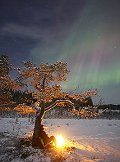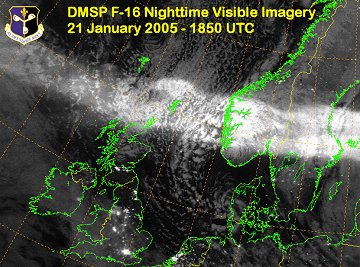 Would you like a call when auroras appear in your area? Sign up for SpaceWeather PHONE.
Would you like a call when auroras appear in your area? Sign up for SpaceWeather PHONE.
FINDING SATURN: Want to find Saturn? It's easy. Step outside on Sunday night, January 23rd, around 7 p.m. and face east. Saturn is that bright golden star just below the rising full moon: sky map. Saturn looks great through a small telescope; take a look!
 EURORAS: "I have never seen such an amazing display of green lights in my life," exclaimed sky watcher Mark Stronge of Northern Ireland. "It was fantastic!" Most observers agreed: Friday night, January 21st marked Europe's best aurora-display in years: gallery.
EURORAS: "I have never seen such an amazing display of green lights in my life," exclaimed sky watcher Mark Stronge of Northern Ireland. "It was fantastic!" Most observers agreed: Friday night, January 21st marked Europe's best aurora-display in years: gallery.
Right: Northern Lights over Valdres, Norway, on Jan. 21st. Photo credit: Ole Jørgen Liodden,
It all began around 1700 GMT when a coronal mass ejection (CME) crashed into Earth's magnetic field. The impact sparked a severe geomagnetic storm that lasted for 6+ hours. High above Earth, a US Air Force DMSP satellite snapped this picture of the auroras spreading across Europe:

DMSP satellites carry low-light cameras perfect for nighttime photography. They can capture city lights, moonlit clouds, and auroras: all these things are visible in the image above.
GOODBYE 720: The source of all this auroral activity, giant sunspot 720, is gone now. The sun's 27-day rotation has carried it around to the far side of our star. Could it return? Yes. Big sunspots sometimes last for months. If sunspot 720 holds together, the sun's rotation will turn it back toward Earth in early February.

Above: Sunspot 720 rounding the sun's western limb on Jan. 21st. Credit: Gary Palmer of Los Angeles, CA.
Condolences to the family of David Lunt, who along with his wife Gerry Hogan, founded Coronado--the source of filters for so many beautiful solar pictures. Like sunspot 720, David is gone but not forgotten. [more]

